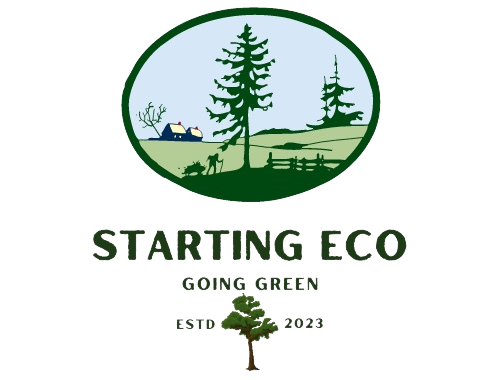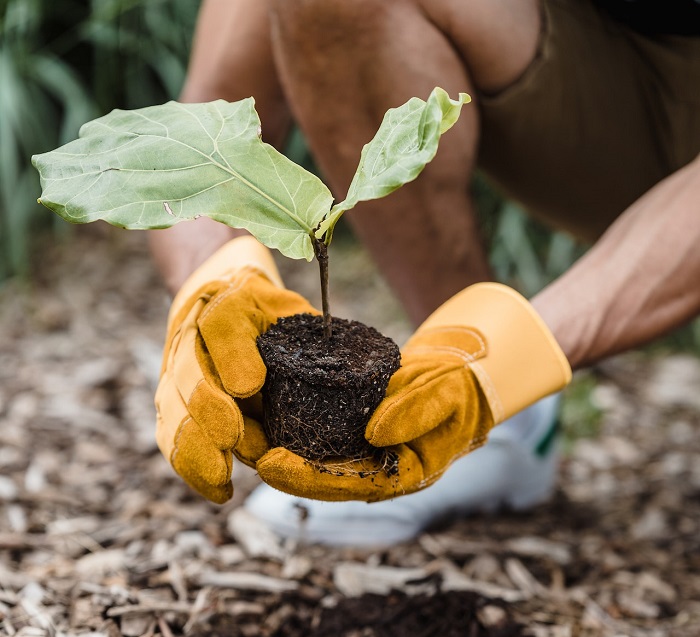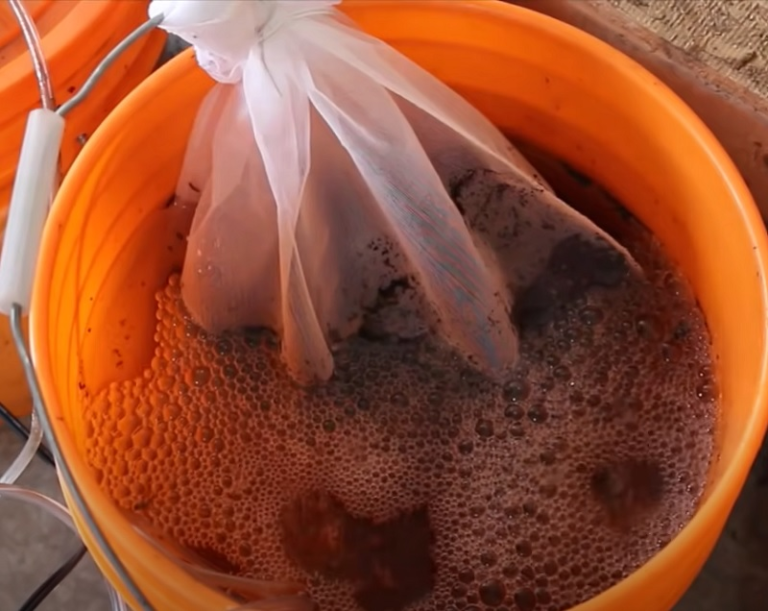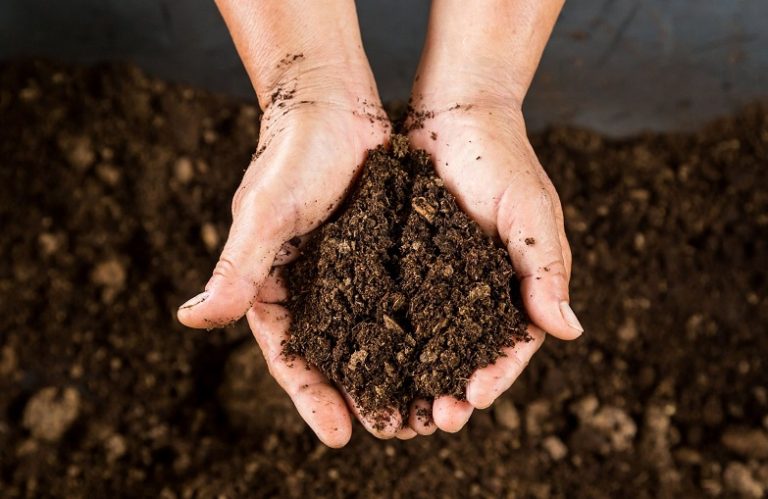20 Simple Ways to Start Living Sustainably Today
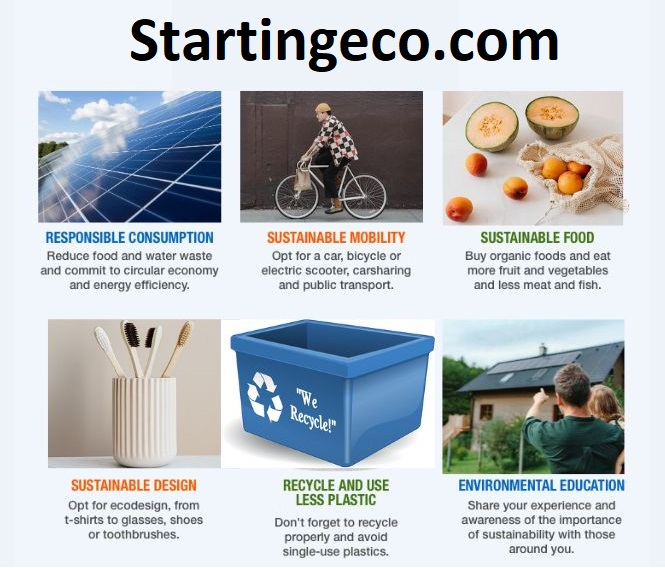
What is Sustainable Living?
Living sustainably means adopting a sustainable lifestyle that reduces the negative impact on the environment and conserves natural resources.
It encompasses sustainable living practices such as reducing waste, using renewable energy sources and choosing eco-friendly products.
Sustainability also includes creating a balanced social and economic system that supports the well-being of communities.
It is a holistic approach to sustainable living, that focuses on preserving our planet for future generations. By embracing this sustainable lifestyle, we can contribute to a healthier planet and a brighter future.
I believe in the importance of sustainable living and with increasing concerns about climate change and environmental degradation, it’s more important than ever to take steps towards a greener, more sustainable future.
That’s why we’ve put together this comprehensive guide to sustainable living, with 20 ideas that can help you reduce your impact on the environment and live a more eco-friendly lifestyle.
Sustainable Lifestyle – Reduce, Reuse, Recycle Materials

One of the simplest and most effective ways to live sustainably is to follow the three R’s: reduce, reuse, and recycle.
Sustainability is an integral part of our lives, and understanding the meaning of “Reduce, Reuse, Recycle” can help us preserve our planet.
To reduce is to eliminate the amount of waste we produce, which we can achieve by consuming fewer products, opting for eco-friendly packaging, and repairing items before replacing them.
Reusing entails finding ways to repurpose items instead of throwing them away, such as using reusable bags, water bottles, or composting food scraps.
Finally, recycling is the conversion of material waste into new products and can be accomplished by sorting recyclable materials or investing in a composting system.
How To Save Money With 3 R’s
Implementing these three principles can be done cheaply by choosing low-cost alternatives, such as swapping plastic bags for tote bags, buying in bulk, and upcycling old items.
Ultimately, reducing waste through sustainable practices is not only cost-efficient but also an essential step toward preserving our planet.
Switch to Renewable Energy Use
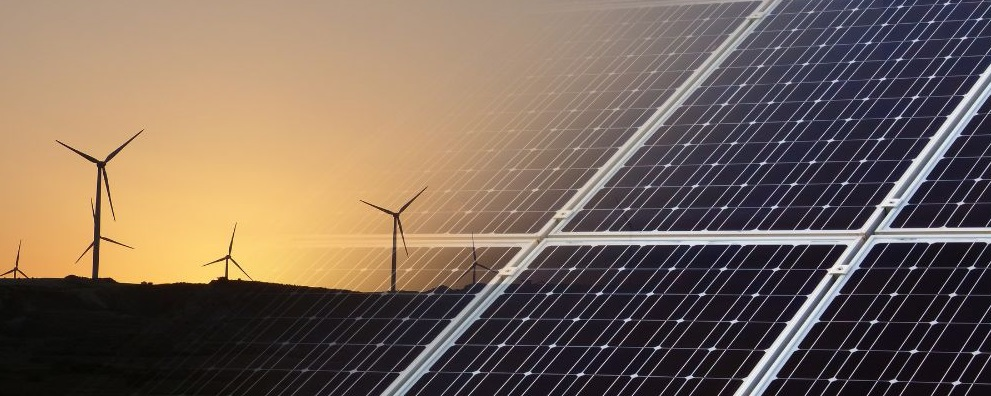
Switching to renewable energy sources like solar or wind power is a great way to reduce your carbon footprint and support the transition to a low-carbon economy.
Renewable energy is becoming more and more popular as a way to power homes electric cars and businesses while also protecting the environment.
So, what exactly does switching to renewable energy mean?
It means using sources of energy that can be naturally replenished, using natural and renewable resources such as solar power and wind power, instead of relying on fossil fuels like coal and oil.
While it may seem like switching would be expensive, it can actually be done relatively cheaply with the right strategies in place.
One way to make the transition more affordable is to invest in energy-efficient upgrades, such as LED light bulbs and smart thermostats.
Another approach is to participate in community solar programs or purchase renewable energy certificates.
With these options and others available, switching to renewable energy can be both cost-effective and beneficial for the environment.
Eat a Plant-Based Diet

Animal agriculture is a major contributor to greenhouse gas emissions and deforestation.
I’m not a vegan or am I suggesting a vegan diet, I’m suggesting lifestyle choices that can reduce food waste.
By reducing your consumption of animal products and eating a plant-based diet, you can greatly reduce your environmental impact and improve your health.
15 Foods For a Plant-Based Diet
- Beans (such as black beans, kidney beans, chickpeas, lentils, etc.)
- Whole grains (such as brown rice, quinoa, oats, bulgur, etc.)
- Fruits (such as apples, bananas, oranges, berries, etc.)
- Vegetables (such as broccoli, spinach, kale, carrots, peppers, etc.)
- Nuts (such as almonds, cashews, walnuts, etc.)
- Seeds (such as chia seeds, flax seeds, sesame seeds, etc.)
- Tofu and tempeh
- Soy milk and other plant-based milk (such as almond milk, oat milk, etc.)
- Seitan (wheat gluten)
- Nutritional yeast (a source of vitamin B12 for vegans)
- Coconut oil and other plant-based oils (such as olive oil, avocado oil, etc.)
- Spices and herbs (such as garlic, ginger, turmeric, cumin, etc.)
- Avocado
- Sweet potatoes
- Mushrooms.
Are you curious about how to save money while embracing a plant-based diet?
It may seem overwhelming at first, but transitioning to plant-based eating can actually reduce your grocery bill.
Focus on incorporating affordable plant-based staples like beans, lentils, and whole grains into your meals.
Thrift stores and bulk food shops are great places to find inexpensive ingredients.
Additionally, shopping in season and preparing meals at home can help you save a significant amount of money.
With these tips, you can nourish your body with healthy plant-based foods while keeping your budget intact.
Use Sustainable Transportation

Transportation is another major contributor to greenhouse gas emissions.
Sustainable transportation refers to any method of transportation that prioritizes efficient, healthy, and environmentally-friendly modes of transportation.
It can be done on a budget!
15 Sustainable Transportation Methods
- Walking
- Biking (including electric bikes)
- Public transportation (such as buses, trains, subways, trams, etc.)
- Carpooling and ridesharing
- Electric vehicles (such as cars, buses, and bikes)
- Hybrid vehicles
- Plug-in hybrid electric vehicles (PHEVs)
- Hydrogen fuel cell vehicles
- Biofuel vehicles (such as those that run on ethanol or biodiesel)
- Human-powered vehicles (such as pedal-powered boats, velomobiles, etc.)
- Electric scooters
- Segways
- Rollerblades/skates
- Skateboards
- Electric skateboards.
By choosing to bike or walk instead of drive, you eliminate the cost of gas, parking, and car upkeep altogether.
When driving is necessary, carpooling with others helps to split the cost of gas and reduces gas emissions.
Public transportation is an excellent option that is budget-friendly and environmentally sound.
Choosing public transport also helps to reduce congestion, save on fuel costs, as well as reduce our carbon footprint.
There are a lot of ways to reduce your transportation costs while still being mindful of our planet.
Support Local and Sustainable Businesses

Supporting local and sustainable businesses is a great way to reduce your environmental impact and support the local economy.
Sustainable businesses are enterprises that seek to operate in a way that has a minimal negative impact on the environment, society, and economy.
These businesses take into account the long-term consequences of their actions and strive to create a positive impact through ethical business practices, resource conservation, and sustainable supply chains.
Sustainable businesses focus on reducing waste, carbon footprint, and pollution, while also prioritizing the welfare of their employees, community, and stakeholders.
Such businesses work towards achieving a balance between the needs of economic and social affairs of the present and the future, leading to a resilient and equitable economy.
These businesses not only create a positive impact but also benefit from increased brand value, loyal customers, and reduced costs in the long run.
The adoption of sustainable practices by businesses is crucial to building a better future for our planet and society.
Reduce Water Usage

Reducing water usage is one of the best ways to encourage sustainable living and promote responsible use of the earth’s natural resources.
Water is a finite resource, and without adequate conservation efforts, our freshwater reserves may become depleted.
Fortunately, there are many great methods to reduce water usage in our daily lives.
For example, installing low-flow showerheads and faucet aerators in our homes can significantly reduce water consumption while also saving money on utility bills.
Simple steps like fixing leaks, taking shorter showers, and using low-flow fixtures can greatly reduce your water usage and help protect this precious resource.
Likewise, opting for drought-tolerant landscaping and using rain barrels to collect rainwater for irrigation are great ways to save water in outdoor settings.
By using sustainable lifestyles, green energy, renewable resources, and being mindful of our water usage, we can help ensure a sustainable future for ourselves and for generations to come.
Practice Energy Efficiency
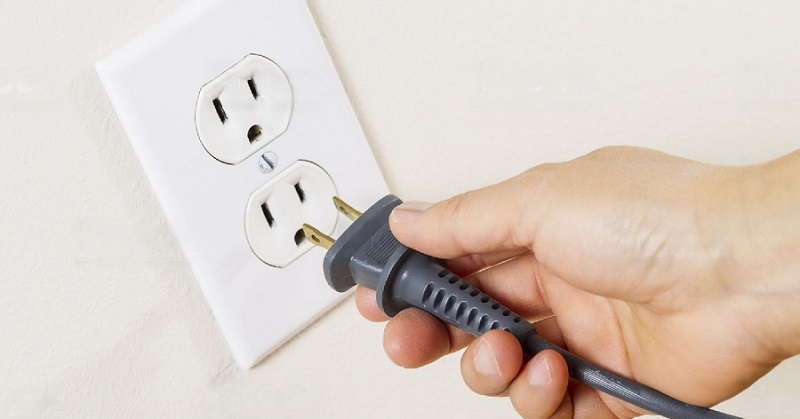
Taking steps to practice energy efficiency at home can make a significant difference in reducing your carbon footprint and promoting sustainable energy use.
15 Ways to Practice Energy Efficiency
- Use LED light bulbs instead of incandescent bulbs.
- Turn off lights and electronics when not in use.
- Use natural lighting as much as possible.
- Use energy-efficient appliances and electronics.
- Install a programmable thermostat and set it to conserve energy when you are not home.
- Seal any air leaks in your home, including around windows and doors.
- Add insulation to your home to reduce heating and cooling costs.
- Use a clothesline or drying rack instead of a dryer.
- Take shorter showers and use a low-flow showerhead.
- Fix any leaky faucets or pipes.
- Plant trees or install shading devices to reduce solar heat gain in your home.
- Use a microwave or toaster oven instead of a full-sized oven when possible.
- Wash laundry in cold water instead of hot water.
- Turn off the tap when brushing your teeth or shaving.
- Use public transportation, carpool, or walk/bike instead of driving alone.
With a few simple changes in behavior and habits, you can lessen the amount of energy you consume and save money on utility bills in the process.
Swap out incandescent light bulbs for energy-efficient ones, unplug idle electronics and appliances, and invest in programmable thermostats to optimize heating and cooling.
You can also consider upgrading to Energy Star-certified appliances and insulation to further increase your home’s energy efficiency.
Simple steps like turning off lights when you leave a room, using energy-efficient appliances, and insulating your home can greatly reduce your energy usage and save you money on utility bills.
By taking these steps, you can make a positive impact on the planet and your wallet.
Use Natural and Non-Toxic Products

Many household products contain harmful chemicals that can harm both the environment and your health.
Making the switch to natural products may seem like a daunting task, but there are many benefits to be gained from doing so.
First and foremost, natural products are typically free from harmful chemicals that can negatively impact the health of both you and the environment.
By switching out non-toxic products for natural alternatives, you are choosing to live a more sustainable lifestyle that is better for both yourself and the planet.
Additionally, natural products are often more gentle on the skin and can provide a more pleasant sensory experience overall.
It may take some time to find the right natural products for your particular needs, but the benefits are well worth the effort.
Compost Food Waste and Yard Waste
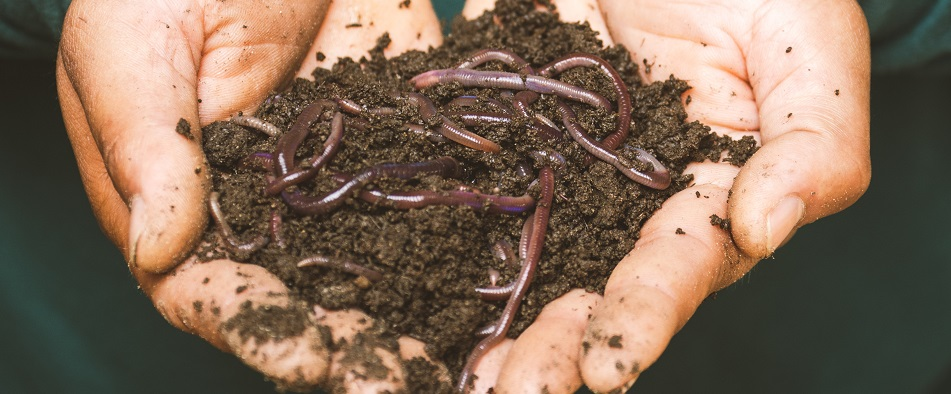
Composting is a great way to reduce waste and create nutrient-rich soil for your garden.
With the rise of sustainable living practices, composting has become a popular way to reduce waste and give back to the earth.
Composting involves the natural process of breaking down biodegradable materials, such as food and yard waste, into a nutrient-rich soil amendment.
By composting, not only are you diverting organic waste from the landfill, but you are also creating a valuable resource for your garden or yard.
Starting a compost pile at home is simple and requires minimal effort, plus it can help reduce your carbon footprint.
Switching to composting is a small but impactful change that you can make to contribute to a more sustainable future.
Plant an Organic Food Garden

Planting a garden is a great way to reduce your environmental impact and enjoy fresh, healthy produce.
Whether you have a small balcony or a large yard, there are many options for growing your own food and supporting local biodiversity.
An Organic Food Garden is a beautiful thing. Not only does it provide access to fresh, healthy produce, but it also allows you to dip your toes into the world of organic farming.
But how do you start one?
It’s not as hard as you might think. The first step is choosing the right location, as your garden will need plenty of sunlight and protection from harsh winds.
Next, you’ll need to decide which crops you want to grow and the best time to plant them.
It’s also important to do your research on organic planting and growing techniques to ensure you’re producing crops that are truly organic.
With a little patience, knowledge, and TLC, you’ll have a thriving Organic Food Garden in no time, and a newfound appreciation for the joys of growing your own food.
Use Sustainable Building Materials

If you’re building or renovating your home, using sustainable building materials like recycled wood, natural insulation, and low-VOC paint can greatly reduce your environmental impact and improve your indoor air quality.
Sustainable building materials are the key to a more eco-friendly and environmentally conscious construction industry.
Now more than ever, building materials are being scrutinized for their impact on the environment, and sustainable development options are becoming more readily available.
From natural materials like bamboo and straw bales, to recycled materials like steel and salvaged wood, the options are endless when it comes to building sustainably.
Not only do these materials reduce the carbon footprint of a building, but they also provide more environmental protection, a unique aesthetic and can even be more cost-effective in the long run.
So, whether you’re looking to reduce your impact on the environment, or simply want to save a few bucks, sustainable building materials are the way to go.
Support Environmental Policies For Future Generations

Supporting environmental policies and organizations is essential for environmental sustainability and creating lasting change.
In today’s world, Environmental Policies have become imperative to maintain a more sustainable life, and future.
These policies aim to further sustainable development goals, regulate the use of natural resources and reduce the carbon footprint caused by humans.
From the Paris Agreement to the Clean Water Act, governments around the world have realized the importance of taking steps towards protecting the environment and environmental resources.
Whether it’s reducing greenhouse gas emissions or preserving national parks, Environmental Policies are the backbone of the fight against climate change.
So let’s all do our part in preserving this beautiful planet we call home. After all, we only have one Earth.
Reduce Your Carbon Footprint

Do you want to help save the planet while also keeping some change in your pocket?
Well, reducing your carbon footprint is not only great for the environment, but it can also save you some green.
One of the easiest ways to reduce your carbon footprint is to conserve energy.
Turn off lights and electronics when not in use, use energy-efficient light bulbs, and adjust your thermostat a few degrees colder in the winter and a few degrees warmer in the summer.
Small changes like these can make a big difference in reducing carbon dioxide emissions. Plus, by using less energy, you’ll save some money on your electricity bill.
It’s a win-win situation. So, let’s all do our part to reduce our carbon footprint, our wallets will thank us.
Reducing your carbon footprint is essential for sustainable living.
Use Technology to Save Energy

Technology can be a powerful tool for using green energy and reducing your energy usage and carbon footprint.
But did you know that technology can also be used to reduce our energy consumption?
It’s true! By taking some simple steps, you can not only save money on your energy bills, but also help protect the environment.
For starters, invest in smart thermostats that can automatically adjust temperature and save energy when you’re not at home.
Another great option is energy-efficient lighting, which uses less electricity and lasts longer than traditional bulbs.
And let’s not forget about the power of programmable power strips to reduce standby energy usage.
So don’t hesitate to tap into the magic of technology to keep your energy use in check. Your wallet (and the planet) will thank you!
Practice Sustainable Travel

Traveling sustainably is another great way to reduce your environmental impact.
Sustainable travel is the way forward for conscientious travelers wanting to explore the world without leaving a hefty carbon footprint.
But how do we go about achieving sustainable travel without sacrificing the joy of discovery?
From choosing accommodations that support local communities, to being mindful of our transportation choices, there are plenty of ways to travel sustainably without compromising on adventure.
Let’s be real, who doesn’t want to hike through pristine forests, snorkel in coral reefs, or taste local delicacies?
It’s the responsible thing to do to ensure these experiences are available for generations to come.
So the next time you plan your trip, don’t forget to consider how you can make it a sustainable one. The planet will be grateful for your efforts.
Use Energy-Efficient Lighting

Switching to energy-efficient lighting options like LED bulbs is an easy way to reduce your energy usage and save money on your utility bills.
Not only does it save on your electricity bill, but it also reduces carbon emissions and helps our planet.
Plus, who doesn’t love a bulb that lasts longer than a sitcom’s run? With LED bulbs, you can light up your space for years to come.
So, say goodbye to those outdated, inefficient bulbs and hello to a brighter, more sustainable future. Trust us, your wallet and Mother Earth will thank you.
Use Green Cleaning Products

Green cleaning products are a breath of fresh air in a world full of harsh chemicals and synthetic fragrances.
These products are made from natural, non-toxic ingredients that are kind to both your home and the environment.
Conventional cleaners often contain harmful ingredients like ammonia, chlorine, and phthalates that can have negative impacts on both our health and the planet.
Green cleaning products, on the other hand, are formulated with ingredients like vinegar, baking soda, and essential oils that are both effective and eco-friendly.
So, if you’re looking for a way to keep your home clean without compromising your health or the environment, it’s time to make the switch to green cleaning products!
Support Your Local Food System
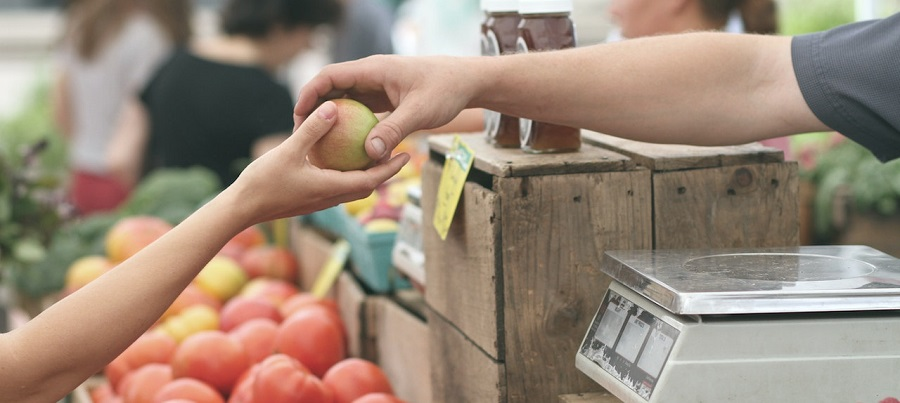
As we become more environmentally aware, people are starting to look for more sustainable living options in all aspects of their lives.
Luckily, there are a variety of lifestyle choices available that can help us “go green.” And what better place to start than at your local farmers’ market?
Not only do local farmers markets others’ markets offer fresh, locally-sourced produce that supports small-scale farmers and helps the local economy, but they also encourage sustainable practices.
By reducing the need for long-distance transportation and packaging, farmers’ markets help to reduce greenhouse gas emissions and waste.
Plus, they often offer educational resources and workshops on composting, recycling, and other environmentally friendly practices.
So next time you hit up your local market, know that you’re not only getting the freshest produce around, but you’re also doing your part for the planet!
Practice Mindful Consumption

It’s no secret that we live in a consumer-driven society where we can easily fall into the trap of buying and consuming more than we need.
But what if we were to take a more mindful approach to our consumption habits?
Enter mindful consumption, the practice of being aware and intentional about what we buy and how we use it.
Rather than mindlessly adding to our shopping carts, we can take a moment to pause and consider the impact of our purchasing decisions on ourselves, the environment, and others.
By embracing a mindful consumption mindset, we can not only reduce waste and save money but also become more connected and conscientious consumers.
So the next time you’re shopping, take a deep breath, and ask yourself: is this purchase aligned with my zero-waste lifestyle, values, and goals?
If not, it may be time to rethink your buying habits and embrace a more mindful approach to consumption.
Look for products with eco-friendly certifications like Energy Star, Fair Trade, or USDA Organic.
Support Sustainable Forestry

Sustainable Forestry, as the name suggests, refers to the responsible use and management of our planet’s forests.
With an eye toward maintaining the health and vitality of our natural environment, the practice of sustainable forestry is essential in keeping our forests thriving for generations to come. And we’re not just talking about trees here.
Sustainable forestry is beneficial to a wide range of flora and fauna, from the majestic bears and wolves of the forest floor to the microorganisms living in the soil beneath us.
In fact, the World Wildlife Fund highlights the importance of sustainable forestry as one of the key actions we can take to combat biodiversity loss and climate change.
So if we want to keep our planet happy and healthy, getting on board with more sustainable methods of forestry is a no-brainer.
Well…I hope This Helps Explain Sustainable Living!
We hope these tips have been helpful in your journey towards sustainable living.
By making small changes in your daily habits, you can make a big impact on the environment and help create a more sustainable future for all.
How do you ensure sustainable living? Let me know in the comments below.
